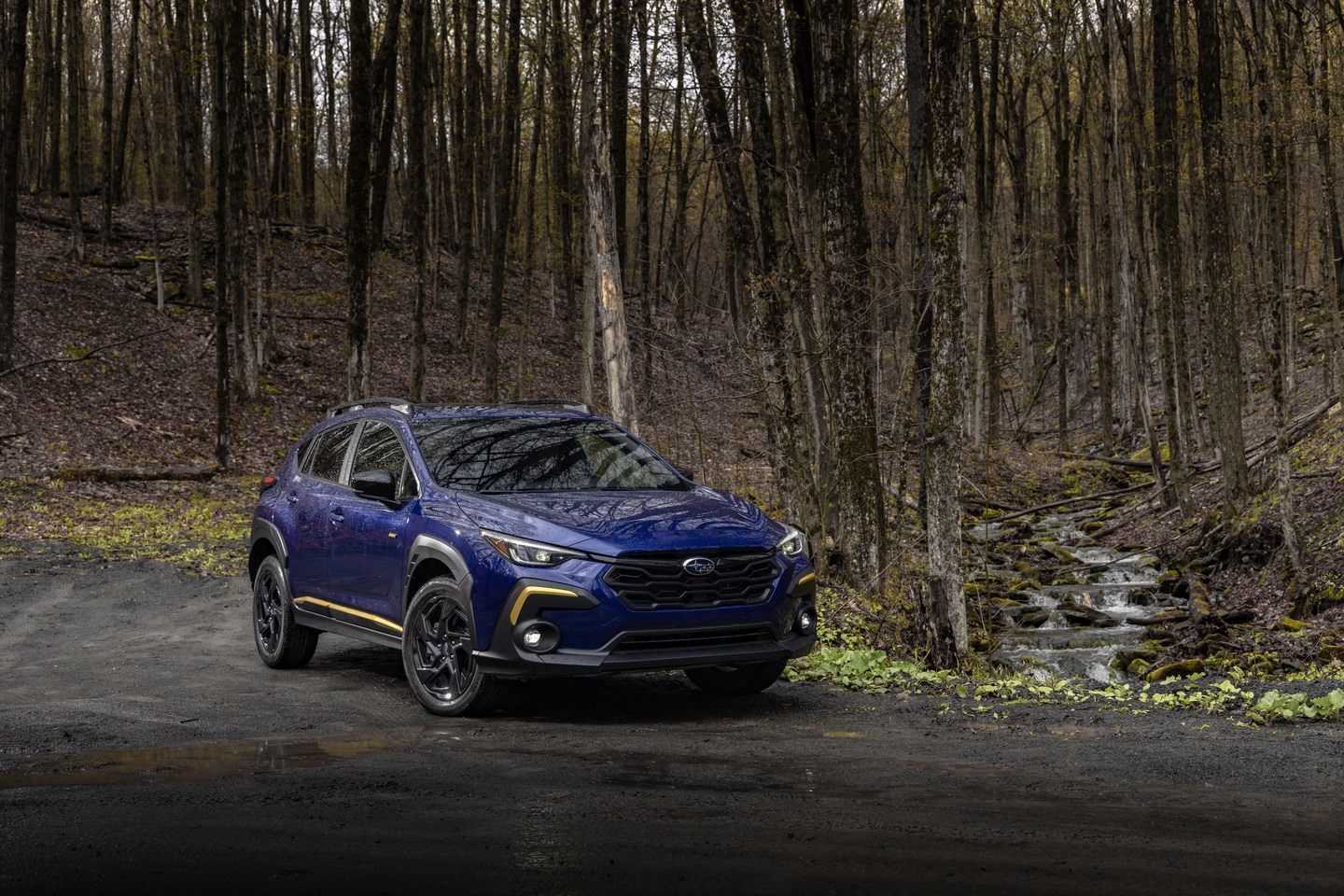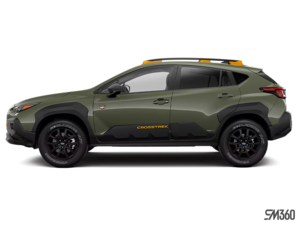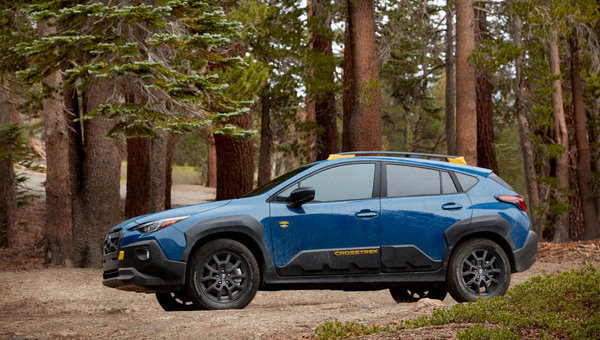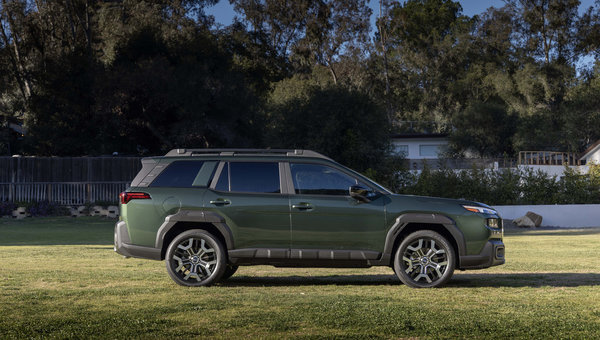Subaru EyeSight: How This Technology Protects Your Family on Ontario's Busiest Roads
September 26 2025,

The latest generation of Subaru EyeSight Driver Assist Technology addresses specific challenges Ontario drivers face: congested GTA highways, busy intersections with pedestrians and cyclists, and the fatigue that builds during long commutes. This award-winning system has earned the highest possible front-crash prevention ratings from the Insurance Institute for Highway Safety (IIHS) for vehicles equipped with it.
EyeSight operates through cameras that constantly monitor the road ahead, identifying potential dangers and providing assistance ranging from gentle warnings to automatic emergency braking. The newest version incorporates three cameras including a wide-angle mono camera that dramatically expands the system's field of view, allowing it to detect hazards sooner and respond more effectively.
How EyeSight Monitors the Road
Two stereo cameras mounted near the rearview mirror create a three-dimensional view of the road ahead, similar to how human depth perception works. These cameras identify vehicles, pedestrians, cyclists, lane markings, and road obstacles.
The third camera—a wide-angle mono camera—covers areas the stereo cameras can't see effectively. This wider field of view proves particularly valuable at intersections, where pedestrians or cyclists might enter the vehicle's path from the sides.
Updated control software processes camera information faster than previous versions, allowing quicker responses to developing situations. An electric brake booster enables smoother, more precise automatic braking interventions when needed.
The system operates continuously while driving, requiring no activation from the driver. It works in the background, monitoring conditions and preparing to assist if situations develop that require intervention.
Pre-Collision Braking and Throttle Management
Pre-Collision Braking can automatically apply brakes if the system detects an imminent collision with a vehicle, pedestrian, or obstacle ahead and the driver hasn't responded to warnings. This feature helps prevent rear-end collisions in heavy traffic—a common occurrence on Highways 401, 404, and 400 during rush hours.
The system first provides visual and audible warnings when it detects potential collision risk. If the driver doesn't respond and collision becomes more likely, the system applies braking pressure automatically. In some situations, this automatic braking can prevent collisions entirely. In others, it reduces impact speed, minimizing injury severity.
Pre-Collision Throttle Management prevents unintended acceleration if the system detects an obstacle directly ahead when the driver presses the accelerator. This feature helps avoid parking lot accidents—backing into poles or walls, or accidentally accelerating into garage walls when parking at home.
Both systems use the same camera inputs but respond to different situations. Pre-Collision Braking addresses moving scenarios, while Pre-Collision Throttle Management prevents acceleration errors in stationary situations.
Adaptive Cruise Control with Vehicle Hold
Adaptive Cruise Control maintains a set following distance from vehicles ahead rather than just maintaining set speed. When traffic slows, the system automatically reduces speed to maintain the selected gap. When traffic speeds up, the system accelerates back to the set cruising speed.
Vehicle Hold allows Adaptive Cruise Control to bring the vehicle to a complete stop in traffic and resume when traffic moves again. The driver doesn't need to constantly modulate brakes and accelerator during stop-and-go highway congestion—the system handles it automatically.
This feature significantly reduces fatigue during Highway 401 backups or DVP slowdowns. The driver maintains steering control while the system manages speed and following distance, reducing the mental load of constant speed adjustments.
You can adjust the following distance to your preference—closer for assertive driving in heavy traffic, farther for more relaxed cruising. The system maintains whatever distance you select while automatically adjusting speed to match traffic flow.
Lane Assistance Features

Lane Centring Assist helps keep the vehicle centered in its lane on highways. The system uses camera inputs to identify lane markings and makes small steering corrections to maintain position. The driver keeps hands on the wheel—the system provides gentle assistance rather than taking over steering completely.
Lane Departure Warning and Lane Sway Warning alert the driver when the vehicle begins drifting from its lane without turn signals activated. Visual, audible, and haptic warnings (steering wheel vibration) notify the driver to correct course.
Lane Keep Assist provides active steering input to help guide the vehicle back toward lane center if it begins drifting. This feature works with Lane Departure Warning to provide both alert and assistance.
These systems reduce the small corrections needed during highway driving, lessening fatigue over long distances. They prove particularly valuable during moments of distraction—checking mirrors, adjusting climate controls, or scanning for highway exits.
Emergency Stop Assist
Emergency Stop Assist activates if the driver becomes unresponsive to warnings while using Adaptive Cruise Control. If visual, audible, and haptic warnings fail to get driver response, the system takes action to bring the vehicle safely to a stop.
The system activates hazard lights, applies brakes gradually to stop the vehicle in its lane or on the shoulder, shifts into park once stopped, and unlocks doors for emergency responders. SUBARU STARLINK Connected Services automatically contacts emergency services.
This feature provides backup protection during medical emergencies—heart attacks, strokes, severe allergic reactions, or diabetic episodes. It also helps if the driver becomes severely distracted or drowsy despite warnings.
While drivers should never rely on this feature intentionally, having it provides additional protection for worst-case scenarios. It represents a final safety layer when other warnings and systems haven't prevented a dangerous situation from developing.
Pedestrian and Cyclist Detection
The wide-angle mono camera significantly improves pedestrian and cyclist detection at intersections. The expanded field of view allows the system to see people entering the roadway from the sides—situations where previous camera systems might not detect them until too late.
Toronto and Vaughan traffic includes many pedestrians at crosswalks and cyclists sharing roadways. EyeSight can identify these vulnerable road users and warn drivers or apply brakes automatically if collision becomes likely.
The system works at intersections with traffic lights, unsignalized crosswalks, and mid-block crossing situations. It identifies pedestrians waiting to cross and tracks their movement to predict if they'll enter the vehicle's path.
For cyclists, the system recognizes their smaller profile and different movement patterns compared to vehicles. This allows appropriate responses to cyclists merging, turning, or suddenly stopping in traffic lanes.
Lead Vehicle Start Alert
Lead Vehicle Start Alert provides a gentle chime when the vehicle ahead moves forward at traffic lights or in stop-and-go traffic. This simple feature prevents the awkward moment of sitting at a green light while the driver looks at their phone or adjusts controls.
The alert helps traffic flow more smoothly by reducing delays at intersections. During morning rush hour in Vaughan or downtown Toronto, these small delays compound—one inattentive driver causes everyone behind them to miss the light cycle.
The system doesn't apply acceleration automatically—it simply alerts the driver that traffic has moved. This maintains driver control while providing helpful situational awareness during stopped conditions.
Real-World Scenarios for Ontario Drivers
Scenario 1: Highway 401 Morning Commute
Heavy traffic slows to 30 km/h, then stops completely. Adaptive Cruise Control with Vehicle Hold manages speed and spacing automatically, reducing the constant brake-and-accelerate cycle. When traffic begins moving again, the system resumes smoothly. The driver focuses on lane positioning and surrounding traffic while EyeSight handles speed management.
Scenario 2: School Zone Crosswalk
Approaching an elementary school at 30 km/h, a child suddenly steps into the crosswalk from between parked cars. The wide-angle mono camera detects the child early, immediately providing visual and audible warnings. The driver's attention was momentarily diverted checking the rearview mirror. Pre-Collision Braking applies automatically, stopping the vehicle before reaching the crosswalk.
Scenario 3: Distracted at Traffic Light
Stopped at a red light on Vaughan's Weston Road, the driver glances at the navigation screen to check the next turn. The light changes and traffic ahead begins moving. Lead Vehicle Start Alert chimes, immediately refocusing attention on driving. The driver proceeds without causing delay or honking from vehicles behind.
Scenario 4: Late-Night Highway Fatigue
Returning from a long weekend at cottage country, fatigue sets in on Highway 11 around midnight. Lane Centring Assist provides subtle steering corrections, reducing the effort needed to maintain lane position. Lane Departure Warning chimes when attention wanders. These assists help the driver maintain safety during the final hour home.
Complementary Safety Systems
EyeSight works alongside other safety systems for comprehensive protection. Blind Spot Detection monitors areas the cameras can't see, warning of vehicles in blind spots during lane changes. Rear Cross Traffic Alert helps when reversing from parking spaces, detecting approaching vehicles from either side.
Reverse Automatic Braking can automatically apply brakes if the system detects obstacles behind the vehicle during reversing maneuvers. This complements EyeSight's forward-facing protection with rearward coverage.
Vehicle Dynamics Control and Active Torque Vectoring help maintain stability during emergency maneuvers. If EyeSight identifies a hazard requiring sudden braking or steering, these systems ensure the vehicle responds predictably.
Learn how EyeSight technology can protect your family during daily drives around Vaughan and weekend trips across Ontario—visit Subaru of Maple to experience these safety features firsthand during a test drive.



